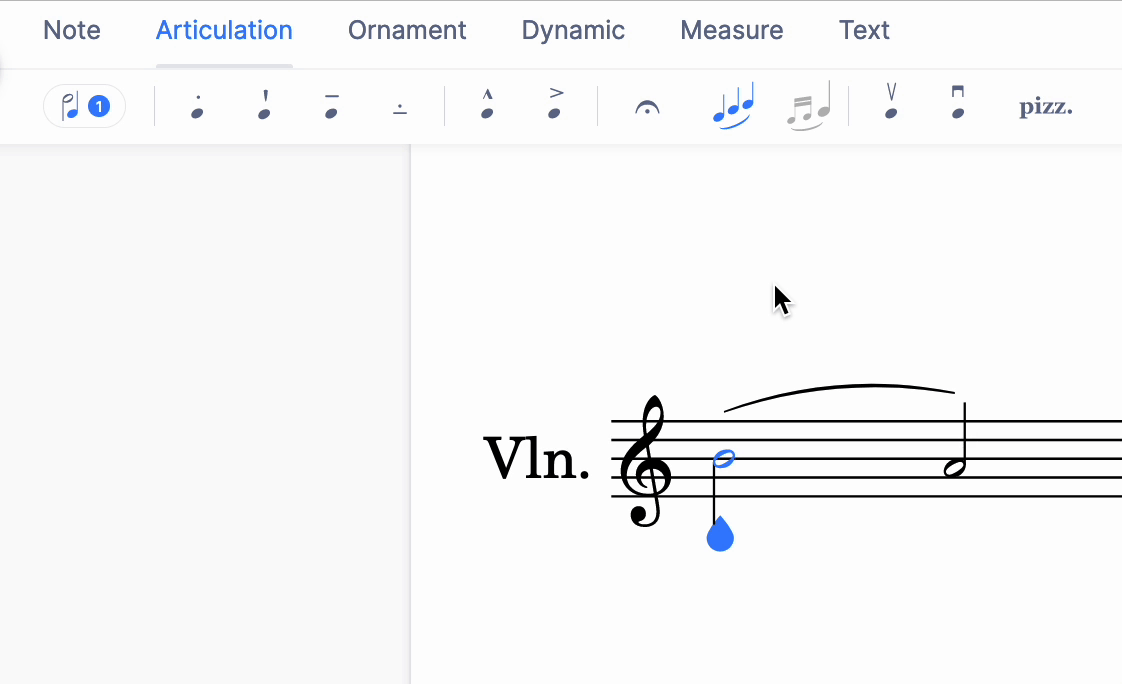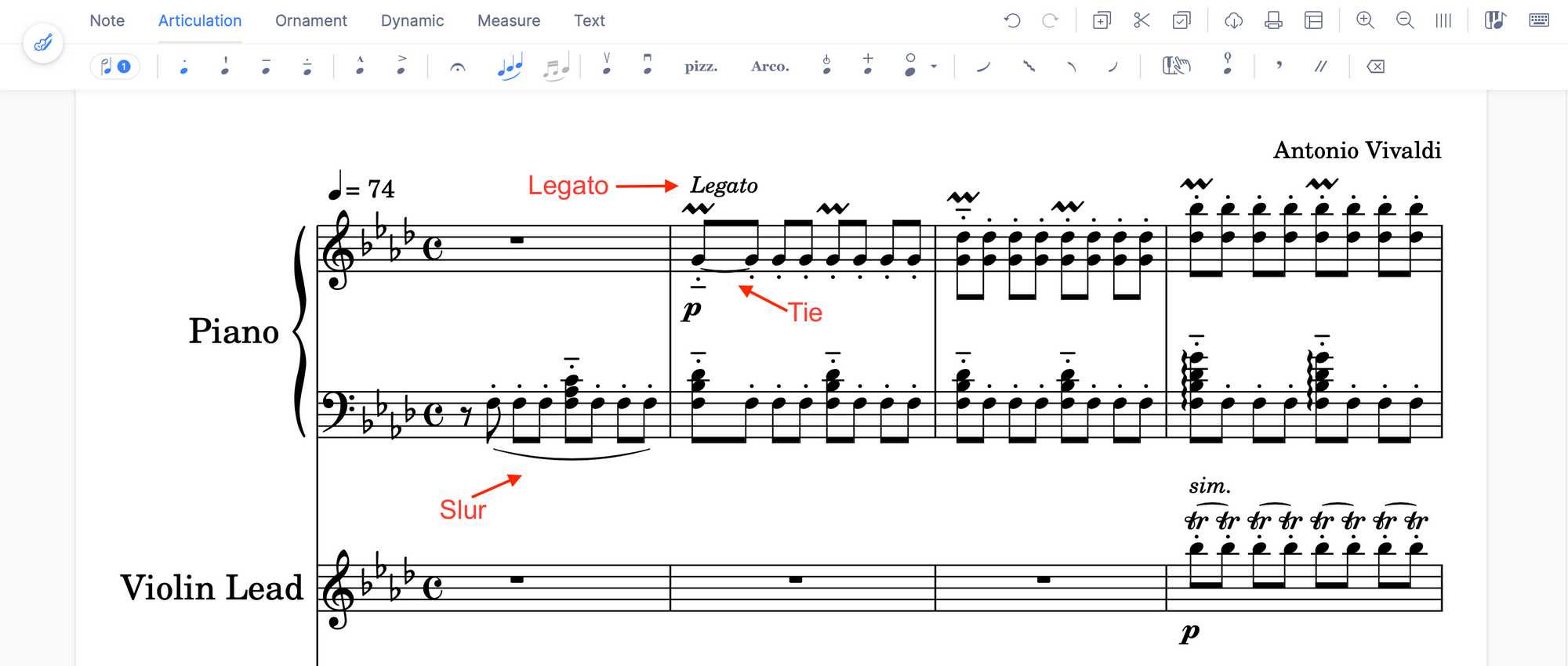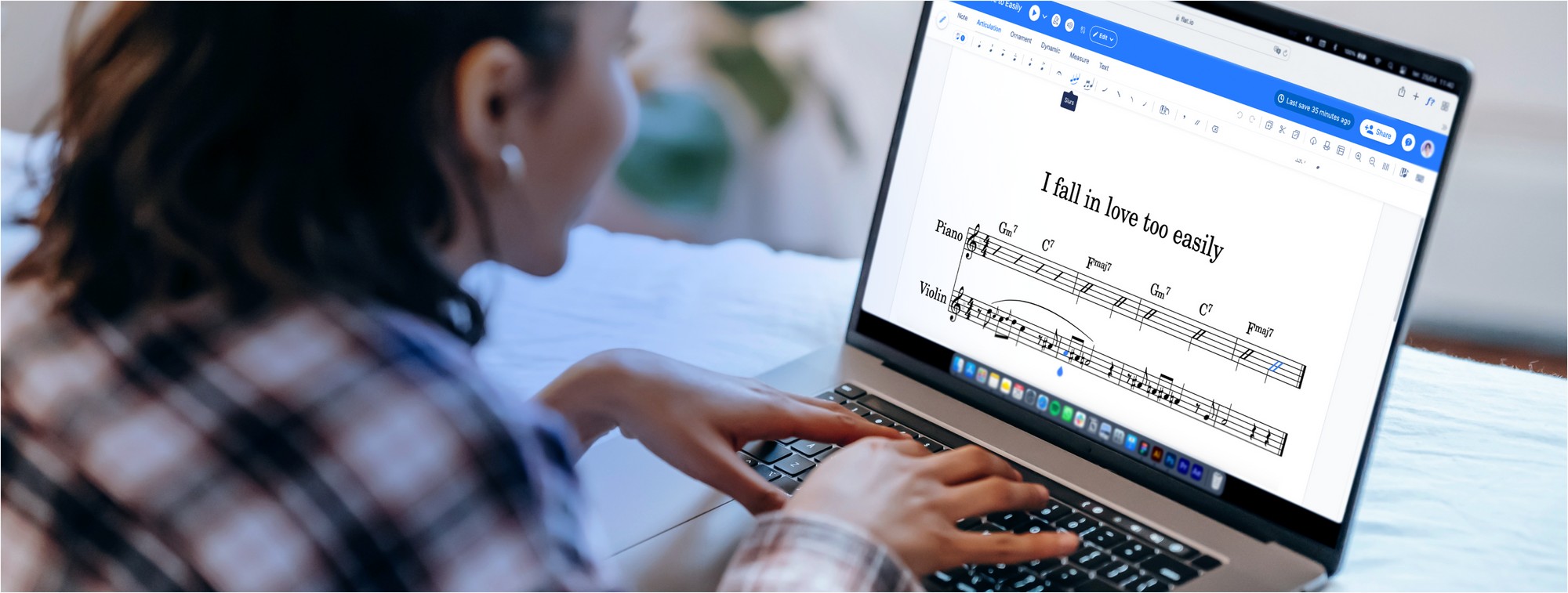Music notation is a language that allows composers and musicians to share their musical ideas. Like any language, it is an important tool for accurately expressing concepts and emotions. And so to compose or play music well, it is essential to understand the various notations. This article discusses the slur and its impact on music expression.
What is a slur, anyway?
The slur is a curved line above or below a group of two or more notes of different pitches, specifying that the notes should be played smoothly, without any breaks in between.

💡Learn how to add a slur in Flat with this tutorial.
⚠️ The slur is shown above the notes if the stems are pointing downwards, and below the notes if the stems are pointing upwards.
Our Flip Slur feature will help you ensure that the slur marks in your music are correctly positioned on the staff. This feature is especially useful when working with complex pieces. Quickly adjust the position of these marks and make your scores look more polished and professional!

Before delving into the emotional effects of slurs and when or how to use them, let's review the difference between some concepts you may have heard of (and should know!): slurs, ties, and legato.
The differences between slurs, ties, and legato
Sometimes you'll hear "slur," "tie," and "legato" used interchangeably when discussing notes, particularly if you are just starting to learn music theory. However, they are not the same thing. As you move forward, it's important to understand the differences in order to communicate effectively with other musicians, successfully translating your musical ideas into complete scores.
Slur
As mentioned before, a slur is a curved line that connects two or more notes of different pitches. This indicates that the notes under the slur should be played smoothly without stopping. In short, slurs indicate phrasing.
Tie
A tie is a curved line too, but it connects two or more notes of the same pitch. It means that the notes should be played as a single note with a duration equal to the sum of the tied notes. Ties are often used to extend the duration of a note.
💡Learn how to add a tie in Flat with this tutorial.
Legato
Legato is a term that means “smoothly” or “connected”. It is often indicated in sheet music by the word “legato”. Legato notes are often slurred.
💡In Flat you can insert an annotation to add the legato.
Thus a slur means that notes of different pitches should be played smoothly without stopping, a tie means that notes of the same pitch should be held for a longer duration, and legato means that certain notes should be connected and played smoothly.

The emotional effect of slurs and how to use them
Slurs can be challenging to use effectively but they're definitely worth taking the time to learn since they can add a great deal of depth and nuance to a piece of music.
A slur creates a sense of phrasing and movement, which in turn produces a smooth and connected sound. But it's vital to consider the style and context of the piece, since the effect of a slur can change depending on the context.
🙋🏻 The slurs should be in line with the style and intention of the composer.
Examples:
- For slow, jazzy ballad, slurs can nurture a sense of sadness and longing.
- For a pop song you can dance to, slurs can give a sense of excitement and energy.
When it comes to mastering any topic in music, practice is key and slurs are no exception to the rule. Go to your Flat account and start experimenting with them!
💡 Here are some guides that you might be interested in regarding using slurs in our platform:
And remember to seek out guidance and feedback from experienced musicians to improve your music composition skills. Consider joining our Discord server to interact with other users on the platform and grow as a composer.
So, if you want to master slurs, keep practicing, use all the resources at your disposal, learn from other musicians, and stay committed to your journey!
See you next time,
